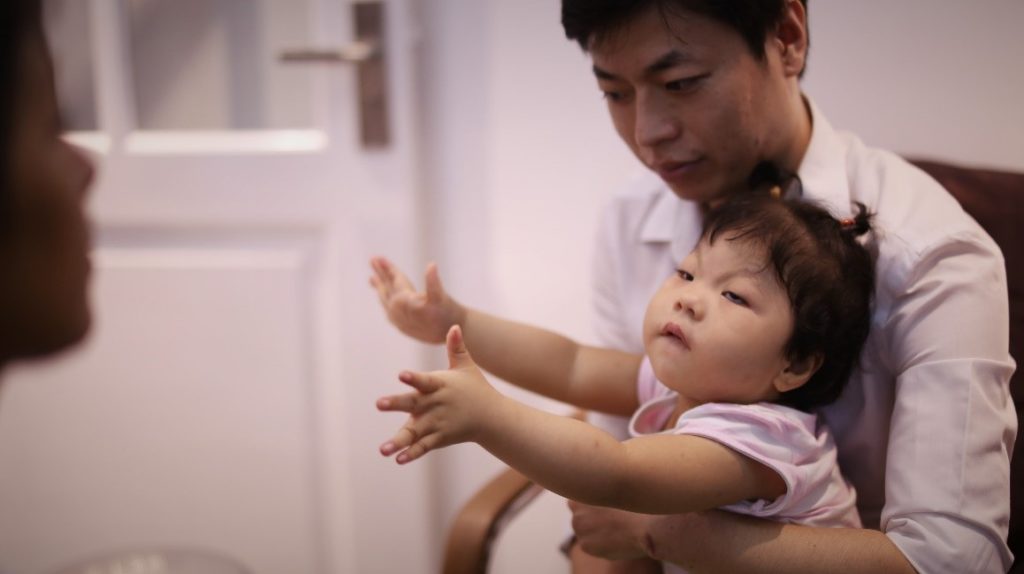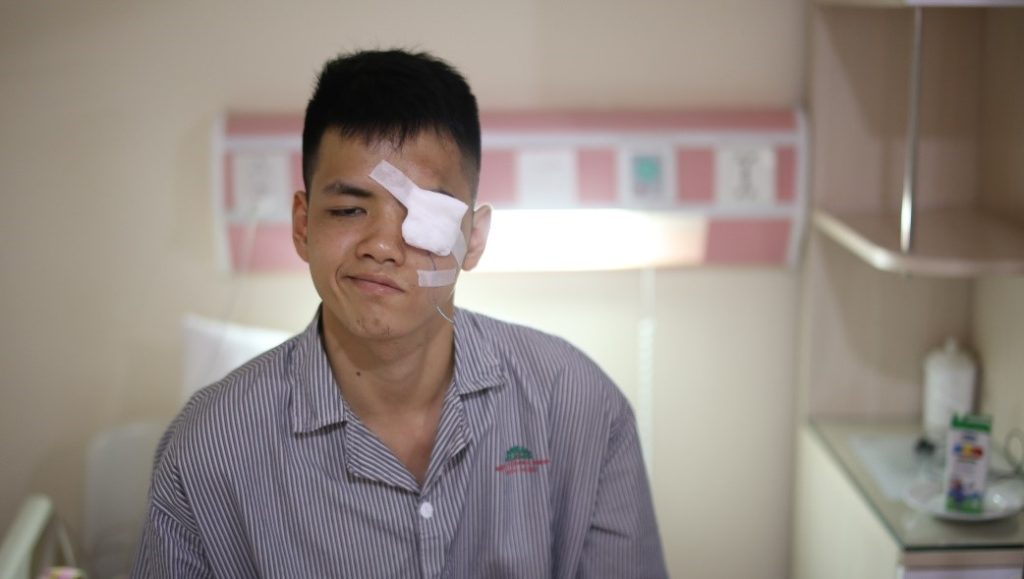Hanoi Mission, May 2018
105 patients were initially assessed by the multidisciplinary team of consultant surgeons brought by the Facing the World charity.
In all, there were 12 doctors representing the following specialities:
Craniofacial Surgery, Neurosurgery, ENT Surgery, Maxillofacial Surgery, Oculoplastic Surgery and Anaesthesia.
Treatment plans were put in place in cooperation with the local Vietnamese surgeons, and it was decided to operate on 47 of the patients jointly during the week. The teams operated at two hospitals – Viet Duc University Hospital and Hong Ngoc Hospital.



The majority of operations were performed on children, some requiring complex surgery reconstructing the entire bony anatomy of their face and skull. One of the young boys we were looking after was suffering from a condition called neurofibromatosis. He needed removal of a mass that was slowly invading his eye socket, damaging his eye and threatening his brain. This involved accessing the upper part of the face using a bicoronal incision (ear to ear across the top of the head) and lowering all the soft tissue down to the level of the nose. His left eye had to be removed but the team were able to excise the whole tumour and used bone from his skull to reconstruct his eye socket. This very challenging operation was achieved thanks to the combined work of craniofacial reconstructive surgeons, neurosurgeons and oculoplastic surgeons.
Cranial vault expansion was performed on two babies with craniosynostosis, a condition in which some bones of the skull are fused together and cause increasing pressure on the developing brain. This surgery is essential to allow a normal development of the brain. It requires the combined input from craniofacial surgeons and neurosurgeons as it involves opening up the skull to gain direct access to the brain. The surgeons removed strips of bone to create artificial openings in the skull, which will allow it to expand normally as the babies grow.




Numerous complex resections of tumours were successfully undertaken. These included cancers of the tongue, parotid gland, and other neck masses.
Other shorter procedures were carried out, all equally complicated even if less time-consuming, and all life-changing in terms of the final outward appearance. For example, the reconstructive surgeons undertook two nose reconstructions with a forehead flap, in which part of the forehead was used to recreate the defect from the nose. It is a multiple-step procedure, and in a couple of weeks the local team will complete the surgery.
Some of the nose reconstructions also involved taking some cartilage from other areas of the body such as ear or ribs. The cartilage was then sculpted to the right shape and inserted into the nose in order to make the new side symmetrical to the other.
Droopy eyelids, known as ptosis, can cause irreversible vision loss in babies if their eyes are not exposed to light for a prolonged period, and the brain is not allowed to develop normally. Early surgery is essential to preserve vision. Different procedures to help suspend eyelids were taught by our oculoplastic surgeon who operated on many children during the week.
Some of the children also suffered from narrow mouths and palates, or conditions resulting in their top and lower teeth not lining up correctly, which prevents them from eating and breathing normally. The maxillofacial surgeons successfully performed surgeries which involved cutting and reshaping the bony structures of the mouth and face, in order to not only improve aesthetics, but also dramatically improve the function of these patients.


The mission’s purpose is intended to build on the teaching and collaboration achieved during the year through the Fellowships offered to the Vietnamese doctors in the UK. All operations were carried out jointly by teams made up of the UK Consultants and the Vietnamese doctors.
The following conditions were treated during the week:
Congenital abnormalities including:
- Apert syndrome (craniosynostosis, palatal deformities)
- Congenital ptosis
- Neurofibromatosis
- Haemangiomas
As well as acquired diseases such as:
- Parotid tumours
- Nerve tumours
- Traumatic injuries to the face
- Contracted burns scars
The operations we performed to try and improve these problems included:
- Cranial bone grafts for orbital reconstruction
- Calvarial remodelling/cranial vault expansion
- Palatal expansions
- Le Fort osteotomies
- Enucleation of an eye
- Eyelid scar revisions
- Ptosis surgeries (brow suspension, levator resection)
- Nasal reconstructions including forehead flaps, rib grafts, ear grafts
To further complement the surgical training, each day also had an element of lecture or tutorial teaching from each member of the team. These sessions were held at both hospitals, and involved anatomy and surgery of the neck, using plates and screws in the face and skull (with hands-on practice on models) as well as anaesthetic techniques and monitoring.
Three more missions are currently in planning for June, October and November 2018.










